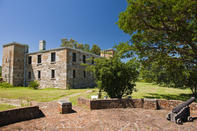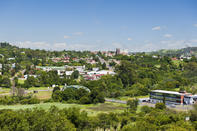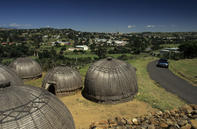Fort Durnford
In the days of the first European explorers and settlers in South Africa, the road to the north of the country was simply a rough wagon track. A man by the name of Clem Heeley decided to erect an inn and trading store at the fording place over the Bushmans River.

At the time C Florey was the ferryman of the river. In 1849 problems arose after a series of cattle raids in the area. This prompted the Government to dispatch military forces to the area. The military forces erected a fort on the hill dominating the fording place. Rebuilt in 1874, the fort is still standing and supposedly haunted by numerous ghosts who, for various reasons, have become attached to the place.
Designed as a substantial stronghold, the fort is complete with water tanks in the basement, a drawbridge, moat and possibly two secret tunnels. It was built by Lieutenant-Colonel AW Durnford, and thus its name became Fort Durnford. These days Fort Durnford is a museum open to locals and tourists alike.
The Town of Estcourt

Under the protection of the military forces sent to the area, a village was established. The village was officially named Estcourt in 1863 in honour of Thomas Estcourt, an English parliamentarian who sponsored the immigration of settlers there. In 1914 Estcourt became a municipality and grew, now housing over 22 000 people. Some traditional Zulu huts have been built around Estcourt and aloes can be seen flowering during winter.
Estcourt lies at the edge of the KwaZulu-Natal Midlands and is the centre for a substantial livestock industry. There is an Estcourt co-operative bacon factory that produces large quantities of ham, sausages and other foodstuffs, as well as a large Nestle factory. Other industry in the area includes the production of hard and soft board, nylon goods, plastics, textiles and animal feeds.
Estcourt and the Voortrekkers

Also of interest is the fact that the waters of the dam cover the site of Veglaager, which was the site where Voortrekkers withstood an attack by the Zulu on 10 August 1838. At the time, a man named Gerrit Maritz had his wagons in laager in the centre of the meander of the Bushmans River. His wagons were overlooked by Fort Durnford not far away.
On 17 February 1838 a Zulu army attacked the site, but were eventually driven off. Estcourt is connected to the historic Voortrekker centre of Weenen by means of a road and, until 1983, a narrow-gauge railway which was a delight to enthusiasts from many parts of the world.